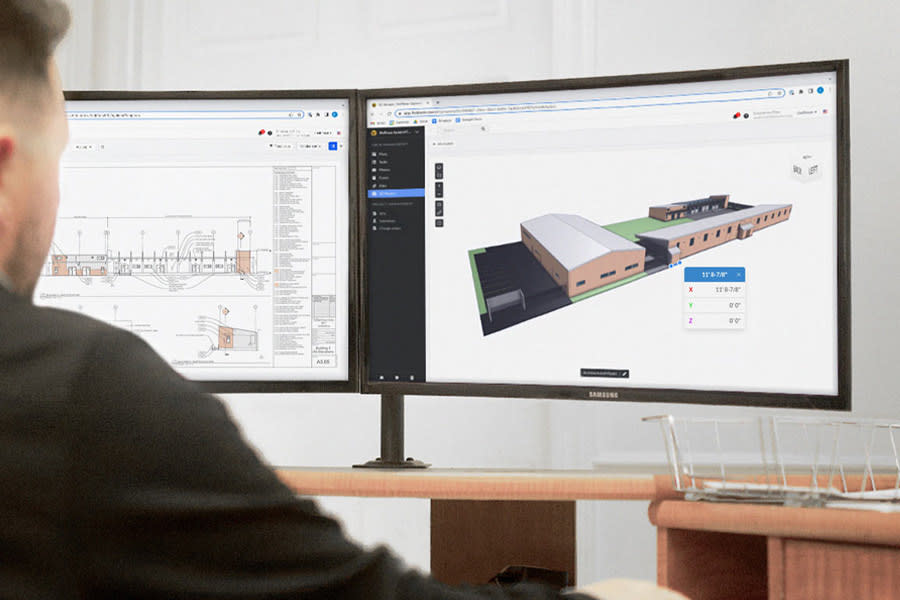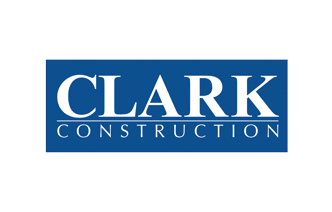Building smarter: How BIM is transforming construction
In an industry as complex as construction, the need for smarter, more integrated processes has never been greater. Building Information Modeling (BIM) is transforming how buildings are designed, built, and managed, bringing precision to every phase of a project. More than just 3D modeling, BIM represents a digital revolution in construction, enabling teams to work from a shared source of truth and make data-driven decisions that reduce risk and cost. The following sections explore how this powerful construction software helps improve efficiency, coordination, and collaboration.
Summary
Building Information Modeling (BIM) is transforming construction by creating detailed digital models that improve visualization, coordination, and cost control across every project phase. Beyond 3D design, BIM enables clash detection, lifecycle management, and real-time decision-making, while tools like Fieldwire bring these benefits into the field with mobile 3D access for faster issue resolution and reduced rework.
Takeaways:
- BIM enhances project planning with interactive models, early clash detection, and improved collaboration.
- ROI includes fewer RFIs, cost savings, and faster project completion, as shown in case studies.
- Leading BIM platforms include Revit, Navisworks, Tekla, and others for different stages of construction.
- Fieldwire makes BIM accessible on-site, enabling teams to verify details and resolve issues in real time.
- Use BIM with construction management tools like Fieldwire to improve efficiency, reduce risk, and streamline project delivery.
What is BIM
BIM, or Building Information Modeling, is a digital process used in architecture, engineering, and construction to create and manage detailed 3D models of buildings and infrastructure. Unlike traditional blueprints, BIM incorporates not only 2D geometry but also 3D relationships, materials, and other critical data. This allows for better visualization, coordination, and analysis throughout a building’s lifecycle, from design and construction to maintenance and operation.
Think of BIM like a digital LEGO set for buildings. Instead of flat blueprints, you’re working with a 3D model where every brick (or component) knows what it is, what it's made of, and how it fits with the rest. Just like LEGO pieces snap together in a structured way, BIM ensures that architects, engineers, and builders can see how everything connects, spot potential issues before construction starts, and keep the project running smoothly from start to finish.

Why is BIM important?
Like other construction software, BIM addresses the major pain points of the construction industry: inefficiency, fragmentation, and costly mistakes. And, while architects and engineers are among the primary users of BIM, the benefits extend across the entire project team, from office to field. Specially when coupled with a construction management app, BIM improves communication and reduces errors from the beginning to the end of a project.
How BIM is helping transform construction
- Comprehensive Digital Modeling (Virtual Design and Construction, VDC): BIM transforms static blueprints into interactive 3D models, improving visualization and integration of building components.
- Conflict Detection (Clash Detection): Identifies design clashes early, minimizing rework, delays, and construction costs.
- Enhanced Collaboration: Using a shared digital platform like Fieldwire enhances collaboration, reducing miscommunication and improving coordination.
- Cost Savings & Lifecycle Management: Provides accurate data for maintenance and operations, reducing long-term costs and enhancing sustainability.
What does the BIM process look like?
Here’s a quick breakdown of the entire BIM process from start to finish for a typical large projects:
1. Design & Planning
- Create detailed 3D digital models
- Identify potential design conflicts
- Optimize architectural and engineering systems
- Perform early-stage clash detection
2. Construction Phase
- Use digital model as precise implementation guide
- Coordinate multi-trade workflows
- Ensure accurate spatial positioning
- Minimize on-site confusion and errors
3. Project Management
- Track real-time project progress
- Monitor budget and schedule
- Generate comprehensive performance analytics
- Facilitate transparent communication
4. Facility Operations & Maintenance
- Transform digital model into asset management tool
- Plan preventive maintenance
- Track building system performance
- Support long-term facility management
BIM Return on Investment (ROI)
BIM is an expensive manual process involving highly skilled professionals. In a full BIM model you are constructing the entire building digitally at an extremely high level of detail. The cost to construct a BIM model can be as high as $0.90 per sqft. For a 15 story 25,000 sqft per floor high rise building this would be about $337,500, a serious investment. However, the dollars and time saved during construction can make this investment well worth it.
The return on investment (ROI) for BIM in construction projects can vary based on execution quality, project complexity, project size, etc. Here’s a rough breakdown of the ROI of BIM implementation:
Typical ROI Estimates
Globally, the most commonly cited range for BIM return on investment is 10–25%, particularly among contractors with moderate to high BIM engagement.
Although there is no standard metric for measuring ROI on BIM, financial indicators such as cost savings, increased profitability and higher productivity are generally viewed as the most important. These are often followed by project delivery metrics like a reduction in RFIs, fewer unplanned changes, higher customer satisfaction and less disruption in project execution.
Case Study: Mortenson Construction
Mortenson, a long-time BIM user, lacked a system to measure BIM’s impact across projects. When the R2 project in Colorado was planned next to the similar Research 1 (R1) building, they partnered with the University of Colorado to conduct an independent study comparing the two projects.
Key Outcomes ️
Cost Savings:
- 780 fewer RFIs on R2 vs. R1, saving $585,000 in administrative costs alone.
- 74% fewer RFIs during foundation work and 47% fewer during steel erection.
Efficiency Gains:
- 6-month faster completion for R2 compared to R1

Major Players in BIM Software
BIM is a lengthy process and often requires multiple different softwares for different trades, or stages of the software. For example, one might use Revit to create the actual BIM model, use Navisworks for clash detection, and use a tool like Fieldwire to reference the BIM model in the field.
Listed below are some of the most commonly used BIM platforms in North America.
Autodesk
Revit: BIM modeling for architecture, engineering, and construction workflows.
Civil 3D: Infrastructure design, site planning, and analysis for civil engineering.
BIM Collaborate Pro: Cloud-based co-authoring in Revit, Civil 3D, and Plant 3D for real-time collaboration.
Navisworks: Clash detection, 4D/5D simulation, and multidisciplinary coordination.
Trimble
Tekla Structures: Advanced steel/concrete structural modeling with advanced fabrication integration.
Trimble Connect: Centralized data sharing, model-based status tracking, and cross-phase collaboration.
Nemetschek Group
Allplan Architecture: BIM-focused architectural design and documentation.
Vectorworks: Integrated BIM workflows for architecture, landscape, and entertainment design.
Using BIM on the Field
While office teams have benefited from BIM software in recent years, the ability to access 3D models directly from the field is proving to be just as valuable. A construction management app like Fieldwire allows teams to access 3D models from the field, on their phone or tablet, to check details and get a clearer understanding of site conditions.
Fieldwire's 3D viewer bridges the gap between field and design teams by enabling precise distance measurements between ducts, pipes, ceilings, and more. Here are a few ways you can use BIM on the field to improve productivity:
- Faster Issue Resolution: Being able to visualize the model on-site helps crews identify and resolve issues quickly, such as clashes or design ambiguities.
- On-the-Spot Verification: With a 3D viewer, teams can verify installation locations, dimensions, and sequencing, helping prevent rework and ensuring things are built as intended.
- Real-Time Access to Accurate Information: Field teams can access up-to-date 3D models, drawings, and specifications directly on tablets or mobile devices.
Making the Most Out of BIM
From materials coordination and waste reduction to dispute resolution, BIM is driving productivity gains that extend well beyond design optimization. As the industry continues to evolve, BIM stands at the center of a more efficient and connected future for construction.




















